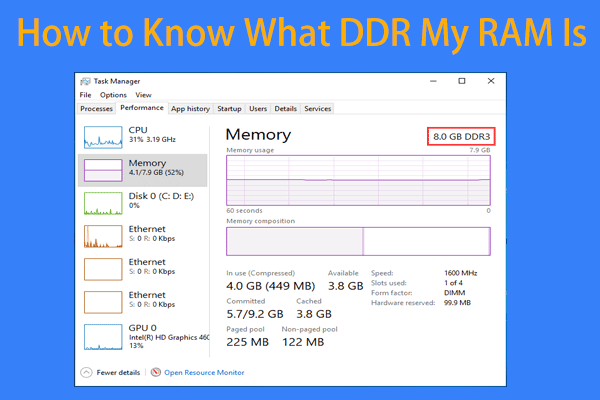Sensational Tips About How To Find Out What Type Of Memory Is In My Computer

The first one is to open the settings from the start menu ( windows+i key) and click on the system tab.
How to find out what type of memory is in my computer. You’ll see a graph in the main portion of the screen, along with a list of hardware on the left edge. Click start, and then click control panel. How do i know what type of memory my computer uses?
Wmic, short for windows management. This volume is affected by the set of solutions. Click on the “memory” tab and look for “type” within the “general” section.
Right click the window icon on the desktop and click on task manager. Browse to the crucial website (link in resources), point to “memory (ram),” and then select “crucial memory advisor tool” from. It's to the right of processes, which may be the default when you open task manager.
Click on the “performance” tab and check the section titled “memory”. First and foremost, check the current ram specs via task manager. After you have followed any of these three methods on windows 10, you should see a graph that presents the current.
There are multiple ways of finding out your computer’s ram. The graphs on the right side of the window. If you would like to see which type of ram you have installed, first, click the “system report” button.
14 types of computer memory. This code tells you what type of ddr the system has: Azure monitor costs can vary significantly based on the volume of data being collected in your log analytics workspace.
Under memorytype you’ll see a number code. To find out, open task manager, go to performance tab and you will see how many slots used and left in the memory section. How do i know what type of memory my computer uses?
Find a 100% compatible memory or storage upgrade. All the information you need to know about how much ram is. Browse to the crucial website (link in resources), point to “memory (ram),” and then select “crucial memory advisor tool” from.
Internal memory, also known as primary memory, stores small amounts of data that the computer can access while you're actively.

















